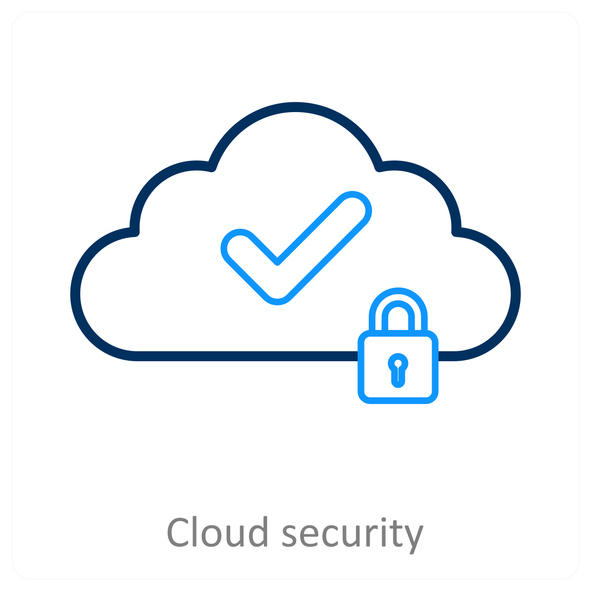Enabling a Seamless Transition to a 100% Virtual Workplace
How SRT’s Managed File Transfer Platform Powered Secure Remote Work in the Cloud"
Migration to Azure
Industry
Technology
Use Case
Secure File Transfer
Products
Titan MFT Server | WebDrive
Background
A US-based business decided to become a 100% virtual workplace in the wake of the COVID-19 pandemic. To ensure continuity and productivity, they migrated their
data to the cloud and provisioned each user with a Managed File Transfer (MFT) solution that gave them the same desktop file access and user experience they had enjoyed previously in the office. Security was also a key focus.
Introduction
The onset of the COVID-19 pandemic forced instant, significant changes to workplaces. Any organization that could function with its employees working remotely quickly moved its people home. Using web meeting tools and other online collaboration software, most companies were able to operate with a degree of normalcy despite
not having employees in the same workspace.
For this US-based software and services company with less than 50 employees, the pandemic coincided with the end of their office lease. The senior management team recognized an opportunity to make a permanent, positive change and canceled their lease — making the company entirely virtual in the process. This was a bold move, and one that was not without risks. The company had enjoyed success for two decades due to a strong collaborative culture. Could they migrate those organizational strengths to a new, all-remote mode of work?
The management team was committed to remote work. They believed they had the organizational and technological abilities to make a success of a virtual business. They were concerned, however, that they would experience a loss in productivity and group cohesion. A variety of issues could aect productivity, but the chief among them was the team’s long-term reliance on a large volume of critical business documents on their on-premises file servers.
Local drives were mapped to these file servers which were accessed daily for the digital resources people needed to do their jobs. These included document templates, marketing sheets, price cards, contracts, and other regularly used resources. Keeping user productivity high, eliminating the need to manage on-premises hardware,
and security for their files were the key drivers in their search for a cloud-based solution.
We were concerned that we would experience a loss of productivity and group cohesion, but were happy to find that SRT's solutions made the transition seamless."
Key Take Aways

Seamless Cloud Migration & Secure File Access
Migrated 14TB of data from on-premises servers to Microsoft Azure, ensuring high security and accessibility for remote employees.

Maintained Productivity in a Virtual Work Environment
Replicated the on-premises user experience with WebDrive, allowing employees to access files exactly as they did in the office.

Cost Savings & IT Efficiency
Eliminated on-premises IT costs, including hardware, outsourced IT services, and utility expenses, reducing operational overhead.
Solution
Successfully shifting a team of people that had long worked together in the same oce required a transition with many elements. The company initially made sure that everyone had the right hardware and software tools to get their jobs done remotely. Then, to migrate the data they used daily, the company undertook three distinct steps.
First, they moved all their work data and files from the oce to the cloud. This meant uploading 14 terabytes of data from a Local Area Network (LAN)-based storage solution to a Virtual Machine (VM) in the Microsoft Azure cloud. To accomplish this task, the company used Microsoft RoboCopy software, the command-line directory and file replication tool for Microsoft Windows. The upload process took several days, with RoboCopy verifying and inspecting each file for viruses. When the process was complete, the company now possessed what its leadership called a “giant hard drive” in the Azure cloud.
The subsequent step was to implement an MFT server solution that would assure high levels of security, easily enable automation, and provide reporting. The company utilized SRT’s MFT platform in Azure. The MFT platform lets storage administrators establish data resiliency, failover, and high availability (HA) for files stored in the cloud.
The process of setting up SRT’s MFT platform in Azure was relatively simple. Using a pay-as-you-go model, costs for testing the solution were minimal. The MFT server was set up, configured with 4 Azure cores, SFTP Certificates were imported, and the software was pointed to the company data stored in Azure within less than 4 hours.
The final step involved recreating the desktop user experience for files that were now in the cloud. This was critical to facilitating a truly productive, collaborative work environment with a 100% virtual team.
To realize this goal, the company utilized the WebDrive desktop software, also from South River Technologies. WebDrive is a desktop tool that handles local interactions with files stored with SRT’s MFT platform. To the end user, WebDrive makes it look as if their files are located on a local or LAN drive, while the files are actually stored in the cloud. The company provisioned WebDrive to each remote employee, configuring drive letters to mimic the previously used LAN-based file directory.
The company defined and enforced security policies to mitigate the risks of data breach. These included implementing encryption of files at rest, along with use of SFTP, which transfers files over a secure channel to an authenticated server. They also used the MFT server to map user identities to the company’s identity
management system to prevent unauthorized users from accessing data on the Azure VM.
Results
The migration of the company’s data to the cloud, implementing of a cloud MFT solution, and enabling mapped drive access through WebDrive, has proven effective. The team is now as productive as before, if not more so, but with everyone working remotely. The transition has been seamless. Having the mapped drives made it unnecessary for anyone to learn a new interface for accessing the files necessary to complete their work.
CHALLENGE
Transform a business from completely on-site to 100% virtual without losing productivity or team cohesion.
SOLUTION
Includes migrating 20 years worth of files to cloud storage—and replicating the user desktop experience.
BENEFIT
Ability to have all remote workers, with no loss of productivity or agility. Putting all company files in the cloud has produced an unexpected gain in productivity by replacing the previous slow, cumbersome process of remotely accessing files through a VPN, used when employees were on the road.
Employees can now quickly and easily access files from anywhere – in the exact way that files were accessed in the office. For example, an employee was able to remain fully productive during a recent visit to family out of state. The company has been able to realize a financial benefit from the move, as well. The costs of maintaining the
storage VM in the Azure cloud are turning out to be significantly lower than what the company had been spending to keep file servers running locally on the LAN.
Costs that were eliminated include:
• The need to pay an outsourced IT firm to apply Windows patches and updates, perform backups, upgrade hardware, and add disk storage for the on-premises servers.
• Capital expenditures for hardware upgrades and capacity increases.
• Utility costs associated with running a server room.
The decision to go all-virtual is turning out well for this organization. There have been some adjustments, to be sure, but in general the move has been beneficial for the team and the company as a whole. Technology has enabled it to happen. The migration of the company’s files o the LAN and onto the Azure cloud has provided
a smooth transition to remote collaboration. Productivity has remained high. In some cases, it has even increased, while IT costs have come down.
At a higher level, the shift to being a virtual business is on its way to paying even more dividends. With remote work now the norm, the company has been able to recruit and hire talent from all over the country. Location no longer matters. The company just hired two highly experienced engineers who live more than a thousand
miles from the old corporate oce. It would been impossible to hire these resources if they had been expected to move and work locally at the headquarters. The result is an overall increase in agility and the potential for growth.
